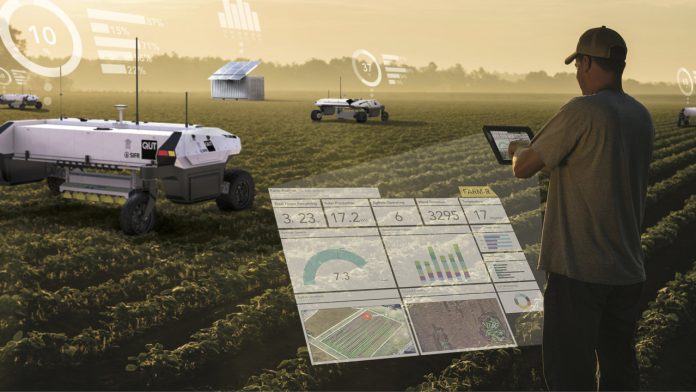
Image credit: Owen Bawden (qut.edu.au)
The Queensland University of Technology (QUT) has designed and built a robot that could save Australia’s farm sector $1.3 billion a year by slashing the costs of weeding crops by as much as 90%.

Image credit: Owen Bawden (qut.edu.au)
Developed with support from the Queensland Government, this fully-autonomous agricultural robot – called Agbot II – was demonstrated for the first time in front of farmers at Bundaberg on 20 October.
Professor Tristan Perez, who spearheads QUT’s agricultural robotics program, said Agbot is equipped with sensors, software and other electronics that allow it to detect and classify weeds and then kill them either mechanically or chemically.
“In future versions, the robots could also feed back data on such things as soil and crop health and the state of diseases as they conduct their operations. This would enable better management decisions driven by paddock specific real-time information,” he added.
The robot, which can also be used to apply fertiliser, was also demonstrated for Minister for Agriculture and Fisheries, Leanne Donaldson.
“The Robotics partnership between the Queensland Government and QUT is a great example of how government and can work together to help our agricultural industries,” the Minister said.
“My Department invested $3 million into this project to help producers use technology to increase efficiencies, profitably and sustainably. The Department of Agriculture and Fisheries is committed to investing in innovative technologies to develop Queensland’s agriculture and food industries.”
Professor Perez stressed that the Agbot II has “demonstrated an outstanding performance in the use of robotic vision and artificial intelligence” for the detection and classification of different weed species.
“The cutting edge robotic vision gives Agbot II the ability to spot-spray selected weed species and use mechanical tools to remove other weeds species that are herbicide resistant,” the Professor added.
“To date, we have concentrated on the three weeds that are relevant to Queensland: volunteer cotton, sow thistle and wild oats, and the vision system operated with 99% accuracy in the classification of the correct species based on the images collected by the robot cameras.”
He said one of the biggest advantages that the agricultural robot brings to the table is its ability to not only detect, but classify the weed species on the spot and decide which actions to take to treat them.
“Agbott ll’s vision system can identify weeds and decide in real time which are better to spray and which are better dealt with, for example, mechanical or thermal methods,” Mr Perez said.
“The light weight of AgBot II, which is about 600kg, will help reduce soil compaction that affects the yield by limiting the root development of the crops. Also due to weight, the robots can be deployed faster onto fields after rain to keep a tight control of weeds before they drop their seeds.”
He said AgBots are also designed to work in groups, which increases the reliability of weeding operations.
“If one robot has a problem and fails, the others continue operating. This is not the case with a single tractor or single sprayer operation,” he added
Another important characteristic of the Agbot ll is that it is solar powered, which makes it eco-friendly and easier on the farmer’s budget.
The QUT team is currently discussing with potential commercialisations partners to roll out this technology as soon as possible.




















